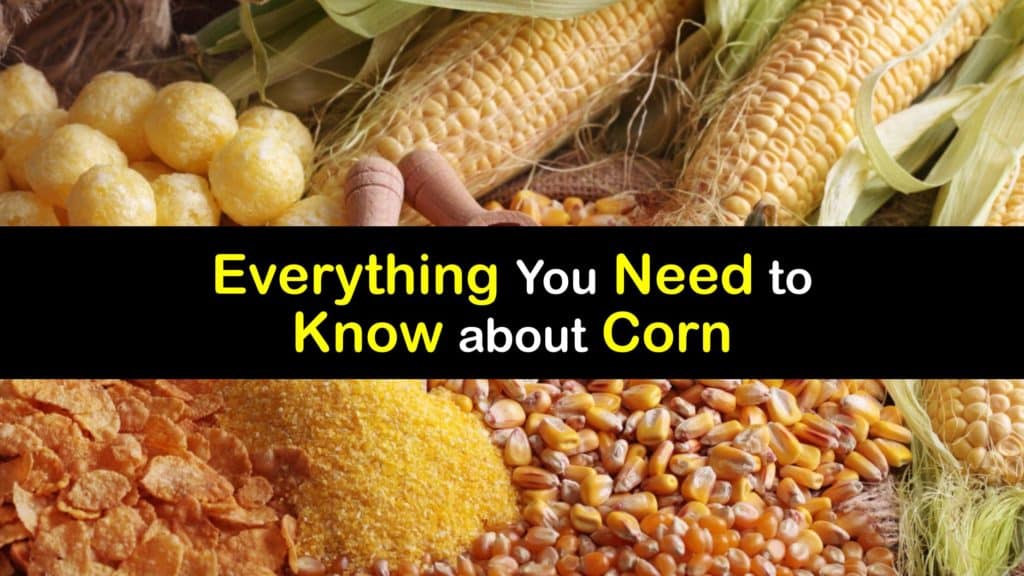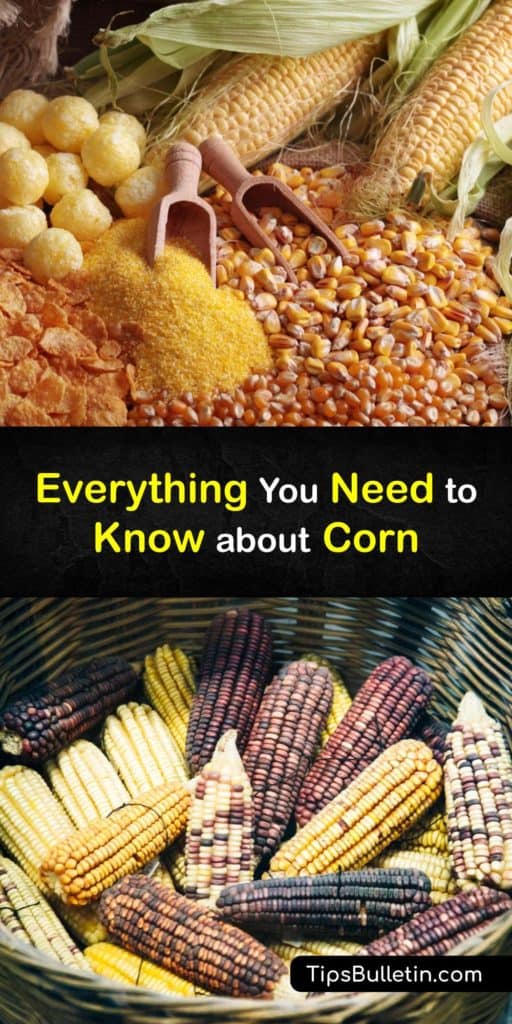If you’ve ever pondered what is corn, the simple answer is that it is a starchy vegetable with a myriad of uses. Corn, or as it’s known in British English, maize, is perhaps the most important crop in the world. Corn, or as it’s known scientifically, Zea mays, is familiar to most as the grain we pop to make popcorn or the yellow and white corn we enjoy from kernels in the summer.
Beyond these everyday applications, corn is turned into syrups and flours, provides vital livestock feed, and is even used to make plastics and ethanol. Asking where does corn come from makes it easy to understand the evolution of this vegetable from a simple food source to a pillar of global infrastructure.
Corn has a rich history with the Native American people and is still used today as a food source and a medicinal product to heal many ailments.

Where Does Corn Come from?
Corn crops provide over six percent of calories for the entire world’s population, making it indispensable as a food source, in addition to its many uses in other sectors. Many people want to know what is sweet corn and what different types of corn are used for.
What is corn? Corn is, at first glance, a vegetable, yet it’s much more on closer inspection. Whether you are questioning sweet or field corn, in investigating where does corn come from, we open up a long history. Many hundreds of years ago, corn was already vital to society as a food source, animal feed, and medicine. Today, corn and its by-products touch many sectors, from the food we eat to the plastics we use to the ethanol in gasoline.
It’s easier to understand what is sweet corn, as this is what most of us picture when asked about corn. Tasty summer sweet corn ears served with butter and salt are our automatic association with corn, yet it goes much further. As the most produced crop in the United States, corn is diverse in its applications and vital to life.
Where Did Corn Originate?
The corn plant was created by humans and is not found in the wild naturally. Corn relies on human intervention to plant and produce it. Without the people who cultivated and developed corn, it would not exist as we know it today.

Researchers estimated the Native American people in central Mexico domesticated maize at least 7000 years ago. Corn’s foundation, Teosinte, is a kind of wild grass. It had a different appearance from our maize today.
The Teosinte-based corn kernels were tiny and not arranged closely together like those on a modern ear of husked corn. Native Americans in North and South America came to rely heavily on this crop for their nourishment. Eventually, corn harvests expanded among these ethnic groups and the rest of the world.
Along with squash and beans, corn or maize is one of the three staple foods and has been farmed across the globe for thousands of years. Though maize is mainly cultivated on an industrial scale, certain varieties are suitable for growing in backyard gardens, with sweet corn the most popular.
What is Corn?
Corn falls under two classifications – a starchy vegetable due to its high starch content and a grain when dried. Corn is recognizable by its characteristic husk of silky green leaves and an interior cob with dozens of tiny corn kernels attached. A corn ear purchased from the grocery store has a callus on the stem where farmers cut it from the corn stalk.
Sweet and sugary sweet corn cultivars, known as sweet corn, are most often grown to be consumed by humans, while field corn varieties make animal feed. The United States is the globe’s largest producer of corn, and domestically more corn is grown than any other crop.
Outside the United States, Australia, New Zealand, and Canada, use the word “corn” to refer to any grain crop. Locally, corn is most commonly referred to as maize. This usage began as a contraction of the term “Indian corn.”
Types of Corn
From breakfast to plastics, corn is the main ingredient in human consumption. Several varieties of corn satisfy these demands since we utilize it for many purposes outside food. The corn produced by large corn growers is not the sweet corn we consume off the cob but the crop required for feed, fuel, and food items like corn starch and syrup.
While sweet corn is delicious cooked and buttered, field corn is bland, tough, and unpleasant to eat. Each corn type has different properties and various nutritional offerings.
GMO Corn vs Non-GMO Corn
GMOs or genetically modified organisms are food crops altered through genetics to convey a specific advantage. While most GMO crops in the United States are grown for animal consumption, corn is an exception – humans consume GMO corn and its by-products.
Unless you grow your corn or purchase non-GMO corn products and processed foods, you likely consume GMO corn often.
Corn is the most cultivated crop in the US, much of which is genetically modified. Most GMO corn is designed to withstand herbicides or fight insect pests. There are various corn diseases and pests that attack the plants. Bacillus thuringiensis (Bt) corn generates harmful proteins for some insect pests but not for people, pets, cattle, or other animals.
Organic farms employ the same proteins to manage pests and don’t affect other helpful insects like pollinators. Insect crop damage is prevented by using less pesticide with GMO Bt corn. Although GMO corn is typically used to make processed meals and beverages, most is used for livestock feed.
In the home garden, pick a plant or two that grows well with corn to deter disease and pests like sunflowers and basil.
What is Sweet Corn?
Sweet corn is what the average person probably associates with the word “corn.” This sugary and sweet-tasting corn is what we purchase on the cob, in cans, or bags for the freezer. You can try planting corn in pots or a small garden plot in the backyard to have access to this yummy veggie. Sweet corn has its own subcategories based on the sweetness level.
Though sweet corn is a much-loved summer vegetable, corn uses go much further, and corn and its by-products are found in other surprising places besides the cob. Becoming aware of where corn and its by-products are used offers an opportunity for us to be more aware of the things we’re consuming and make informed choices.
There are many ways to store your corn until you are ready to eat it. Freezing and canning are popular. Store cooked corn in fridge for several days, similar to corn on the cob.
The Diverse Uses of Corn
Upon hearing the word corn, a fresh corn kernel likely comes to mind; however, the corn industry is so much vaster than just the sweet corn we enjoy on our dinner plates. From corn starch to animal feed to more complex structures like maltodextrins, corn and its by-products are widely used in food and industry.
Like wheat flour, corn flour is used to make corn bread – a southern living staple; it also creates the corn chip often used for dipping in salsas and guacamole, the hominy for grits, and the cornflakes many eat for breakfast.
Thanks to the many uses of the corn plant in North America, New Zealand, and the United Kingdom, those with corn allergies must take extra care to avoid accidentally ingesting it. Even corn silk has an array of uses, the most notable being its role in the medical field as a treatment for urinary issues and kidney stones.
Corn is fascinating as a food source and a vital part of many industries. As corn comprises so much of our modern diet and the products we interact with daily, it’s essential to understand what corn is and where it comes from.
Understanding more about this crucial crop allows you to make a decision about adding it to your home garden, be more aware of consuming GMO corn, or learn what substances are corn by-products and how to avoid them. With a rich history worldwide, corn is a global leader in keeping populations fed and providing for livestock.

If you loved this article on what is corn, please share this brilliant information answering where does corn come from with your friends and family on Pinterest and Facebook.